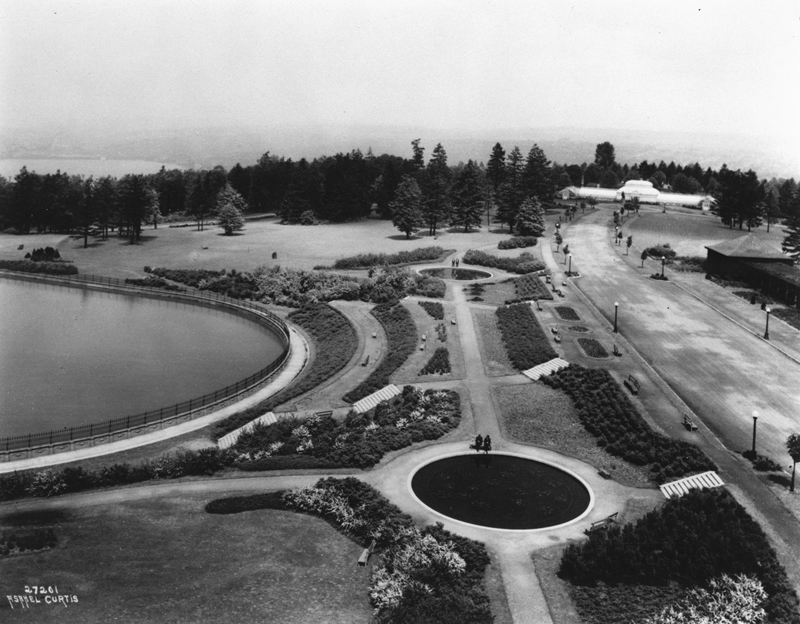-
Black Sun
Volunteer Park Concourse
The land for Volunteer Park was purchased by the City of Seattle in 1876. It was known as City Park until 1901, when city officials changed the name to Volunteer Park to honor volunteer soldiers who fought in the Spanish American War.
The reservoir was built that same year as part of the construction of Seattle’s public water system. The reservoir is gravity-fed with water from the Cedar River Watershed in the Cascade foothills. In 1907, the city built the water tower to serve those residents who lived above the reservoir.
The reservoir forms one axis of the park’s design, with the view across the Sound out to the Olympic Mountains framed by trees planted on the northern and southern sides. It is a great example of a “borrowed landscape” that is often seen in Seattle’s Olmsted parks and boulevards. The distant view is brought into the park and becomes part of visitors’ experiences of the landscape.
The second axis of the design follows the drive that follows the ridgeline of the hill toward the Conservatory. If you look toward the Conservatory, you will notice that the drive curves slightly to the east. This is a common Olmsted design element. Obscuring the end of the road gives a feeling of discovery, drawing visitors down the road toward the unseen destination.
Volunteer Park is home to a number of sculptures and memorials. One is the Black Sun, sculpted by Japanese artist Isamu Noguchi and placed in the park in 1969. The Seattle Times interviewed Noguchi when the piece was installed, and he expressed his hope that the piece would become a place where people would come together. This wish has certainly been realized — the sculpture is often surrounded by people from near and far.
In the 1970s, the sandstone paving was extended from the front of the museum across the Concourse to the terrace above the reservoir. The planter boxes were also added at that time.
The upper terraces were redesigned and replanted in 1991 as part of a renovation of the Museum forecourt.
Cross the concourse behind you and walk east to the front of the Seattle Asian Art Museum for the next stop.


